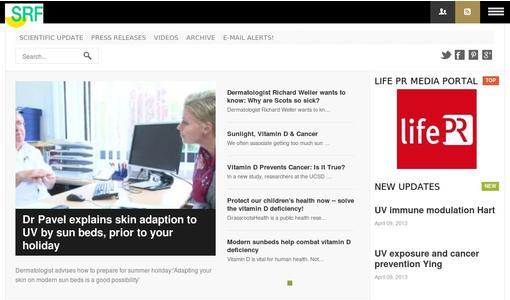And there is now increasing scientific evidence to back up these subjective opinions on the positive benefits of sunlight. We know that greater exposure to sunlight can have a positive effect on the onset and development of certain types of internal cancer, such as oesophageal cancer.
Until now, however, noone has looked into the association between ovarian cancer and how much sunshine exposure patients have had over a lifetime. So a team of scientists at the Queensland Institute of Medical Research, Brisbane, Australia, led by Dr. Bich Tran, carried out a study on the link between environmental exposure to ultraviolet radiation and the risk of developing ovarian cancer.
In this trial, researchers compared the estimated amount of sunshine received over a lifetime by 1,500 ovarian cancer patients against a control group of just under 1,500 women aged between 18 and 79. UV radiation levels were estimated using data from the NASA Total Ozone Mapping Spectrometer. The results of the study reveal an inverse correlation between an individual's lifelong UV exposure in their place of residence and the risk of developing ovarian cancer.
The study shows that UV radiation - whether from the sun or sunbeds - has a positive effect on cancer. "This study backs up many other findings which prove that adequate levels of vitamin D can reduce the likelihood of developing various types of internal cancer by 30%", Ad Brand of the Sunlight Research Forum (SRF) explains. "For this reason, we recommend moderate exposure to sunlight, as it has been proven to increase the body's vitamin D levels."
Source:
Association between ambient ultraviolet radiation and risk of epithelial ovarian cancer. Bich Tran, Susan J. Jordan, Robyn Lucas, Penelope M. Webb, and Rachel Neale; for the Australian Ovarian Cancer Study Group Cancer Prev Res (Phila). 2012 Nov;5(11):1330-6. doi: 10.1158/1940-6207.CAPR-12-0279. Epub 2012 Oct 3.

